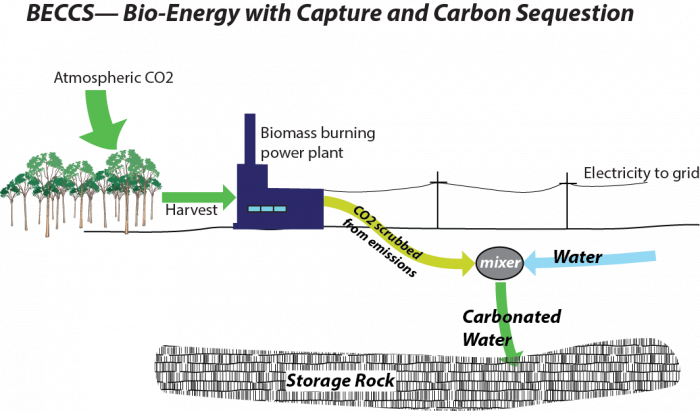Bio-Energy with Carbon Capture and Sequestration (BECCS)
BECCS encompasses a wide range of different plans, but what they all share in common is the utilization of plants to draw CO2 from the atmosphere (which they have perfected over millions of years) and then using the biomass to generate power. In one version, the plant material is fermented to yield biofuels like ethanol, but when the ethanol is burned, it releases the CO2 back into the atmosphere — this is not going to result in negative carbon emissions. But in another form, a BECCS scheme combusts the biomass to electrical energy in a power plant equipped with CO2 scrubbers on their emissions.

The captured CO2 from these power plants is then injected into a deeply buried geologic layer where it is sequestered — just as with the DACCS approach. A BECCS system will reduce the amount of CO2 in the atmosphere while at the same time producing energy, the sale of which helps offset the costs. Some estimates suggest that a system such as this could remove carbon at a net cost of \$15 per ton of CO2 — significantly cheaper that the DACCS systems (which might get to \$100/ton in the near future).
Deploying BECCS on a large enough scale to make a serious reduction in CO2 would require a lot of land and water to grow the biofuels, and this imposes a limit since we will also need the land and water resources to grow food crops for a growing population. One estimate suggests that in order to remove 12 GT of CO2 from the atmosphere each year, we would need to commit an area equal to one third of the present cropland area to BECCS and we would need perhaps one half of the water currently used by agriculture. These are some pretty serious environmental constraints!
Nevertheless, BECCS holds great promise for being an important part of a negative emissions strategy that we will need to dramatically lower our net carbon emissions.
